Schwerin is the capital of the state of Mecklenburg-Western Pomerania and the historic residence city of the dukes and grand dukes of Mecklenburg-Schwerin. It is the home to loads of elegant and magnificent buildings in the beautifully situated town on the lake Schweriner See, where you can enjoy various lovely lake cruises.
The most famous building is Schwerin Palace, which is a true fairy tale castle with its many towers and spiers. It is a must to visit during a tour of the city, but there are also many other large buildings within a pleasant walking distance. Along the way you can enjoy the fine pedestrian streets and squares located in the old town.
The cathedral and market square are major sights in Schwerin’s old town, while the nearby shopping street Mecklenburgstraße is definitely also worth a stroll with its shops and cafes. The street opens onto Lake Pfaffenteich, which is one of the city’s many cozy oases, next to the banks of Schweriner See and the gardens by the palace.
The nature around Schwerin offers many possibilities for excursions. Boat trips on the Schweriner See and walks in large gardens are good choices, but the city’s lovely beach is also close to the center, a short drive to the cozy Zippendorf district. At Zippendorf you also find the district Großer Dreesch, which is an example of urban planning from the GDR.
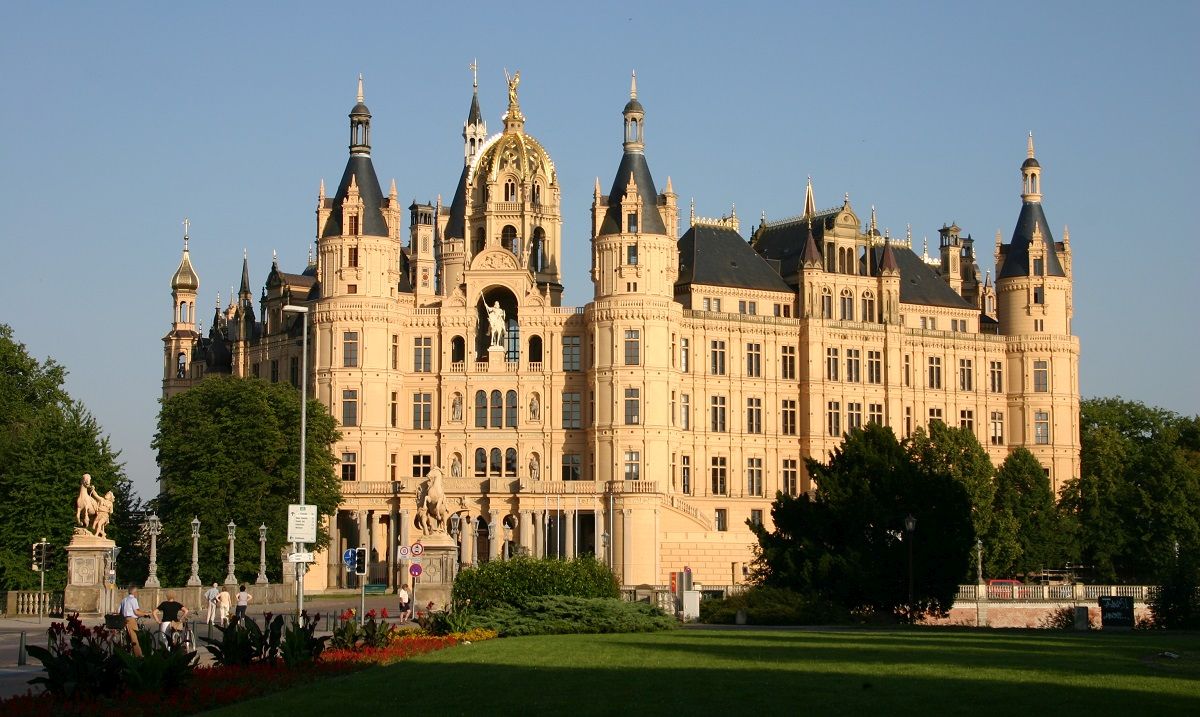
Schwerin’s most famous building is the fairytale castle, which with its many golden towers, spiers and ornaments is an unforgettable sight. The castle is located on an island in the Schweriner See. Today the castle is the seat of the regional parliament of the German state of Mecklenburg-Western Pomerania, but there is also a museum, the Schloßmuseum, providing access to many of the beautiful rooms.
The central square, Markt, is surrounded by interesting buildings, most of which are built as residential houses. Gable houses, the town’s old town hall in partly English tudor style are a few examples. However, visually the market square is dominated by the nearby cathedral.
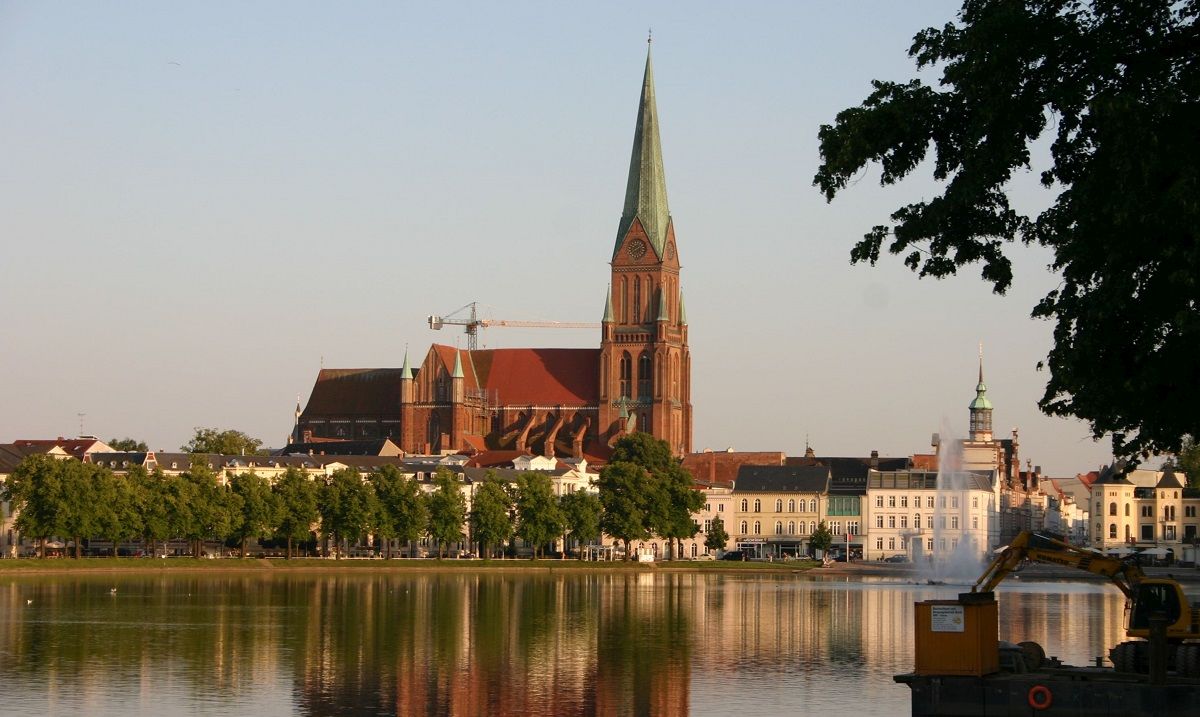
Schwerin’s Cathedral is the most prominent profile in the old city skyline. It has a beautiful interior with a bronze font from 1325, an organ with 5,100 pipes and a Triumphal Cross from 1420.
Schloßstraße is Schwerin’s grand street with one prestige building after another. The street leads the short way from the Old Garden/Alter Garten to the city center.
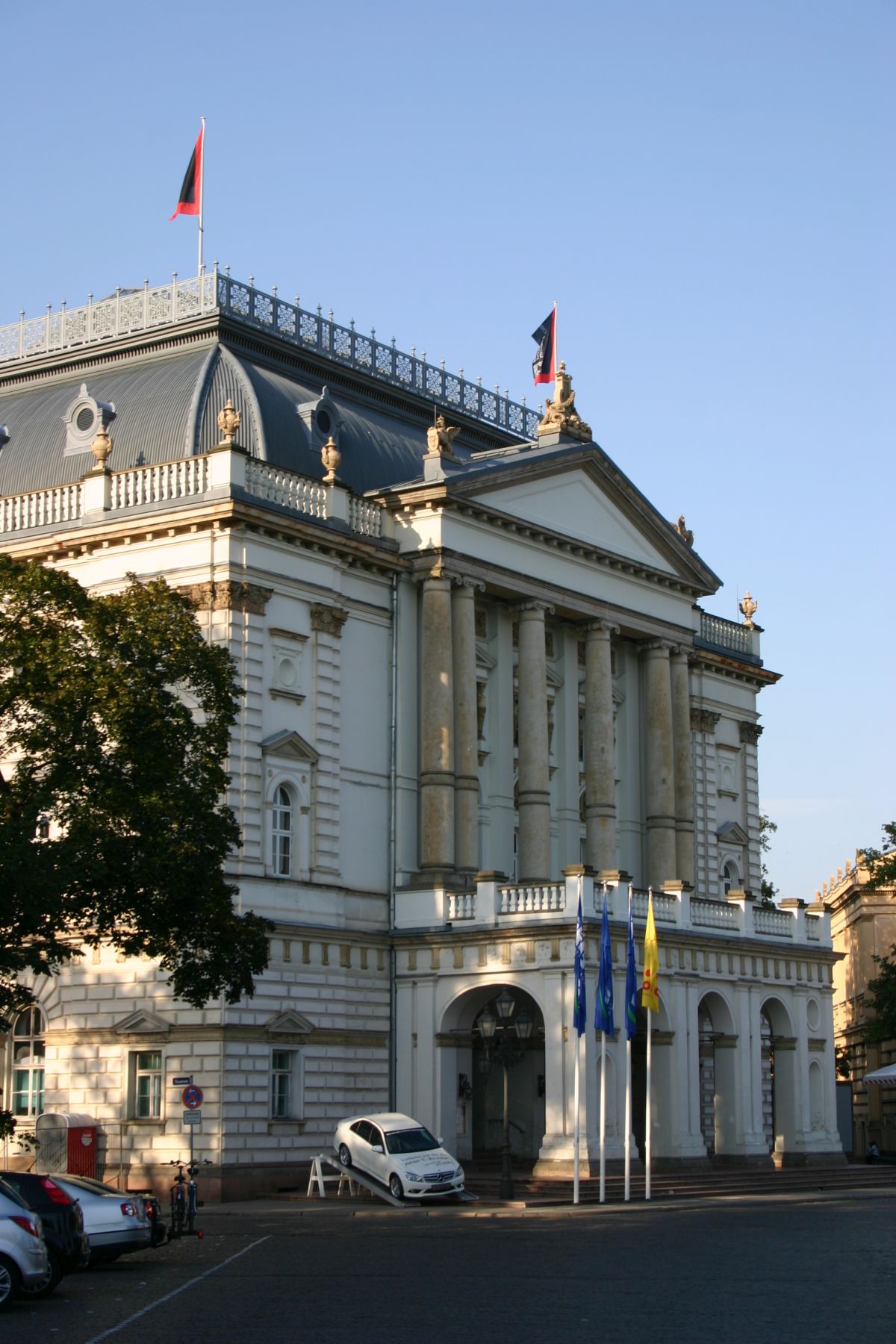
Schwerin’s elegant State theater was built in 1883-1886 in Neo-Baroque architecture with inspiration from the Italian Renaissance. It is one of the most beautiful buildings of its time.
This is the art museum of the state of Mecklenburg-Western Pomerania, and here you can admire, not least, one of the country’s finest collection of works by old Dutch masters. However, there are other exhibits, such as modern art.
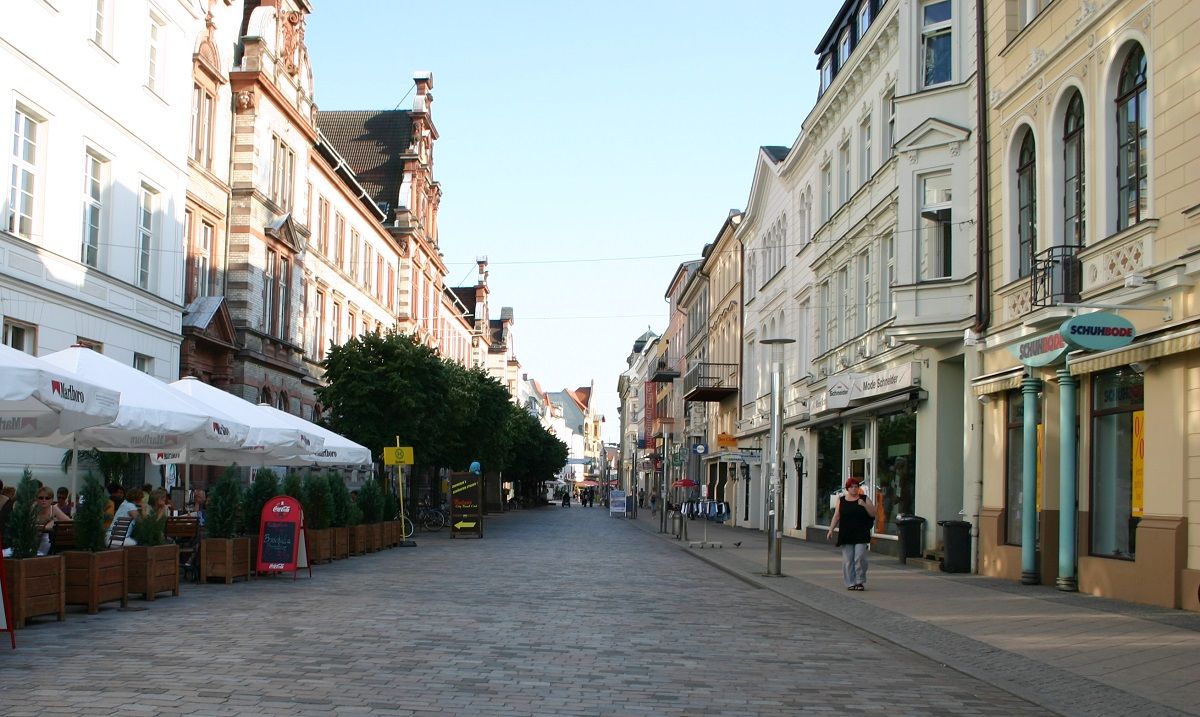
The Mecklenburgstraße pedestrian street is Schwerin’s main shopping area. The street connects central parts of Schwerin and offers many shops and restaurants between the sights.
At the embankment between the stables of Schwerin Castle and the castle itself you can board a lake cruise on the Schweriner See with magnificent views to the city.
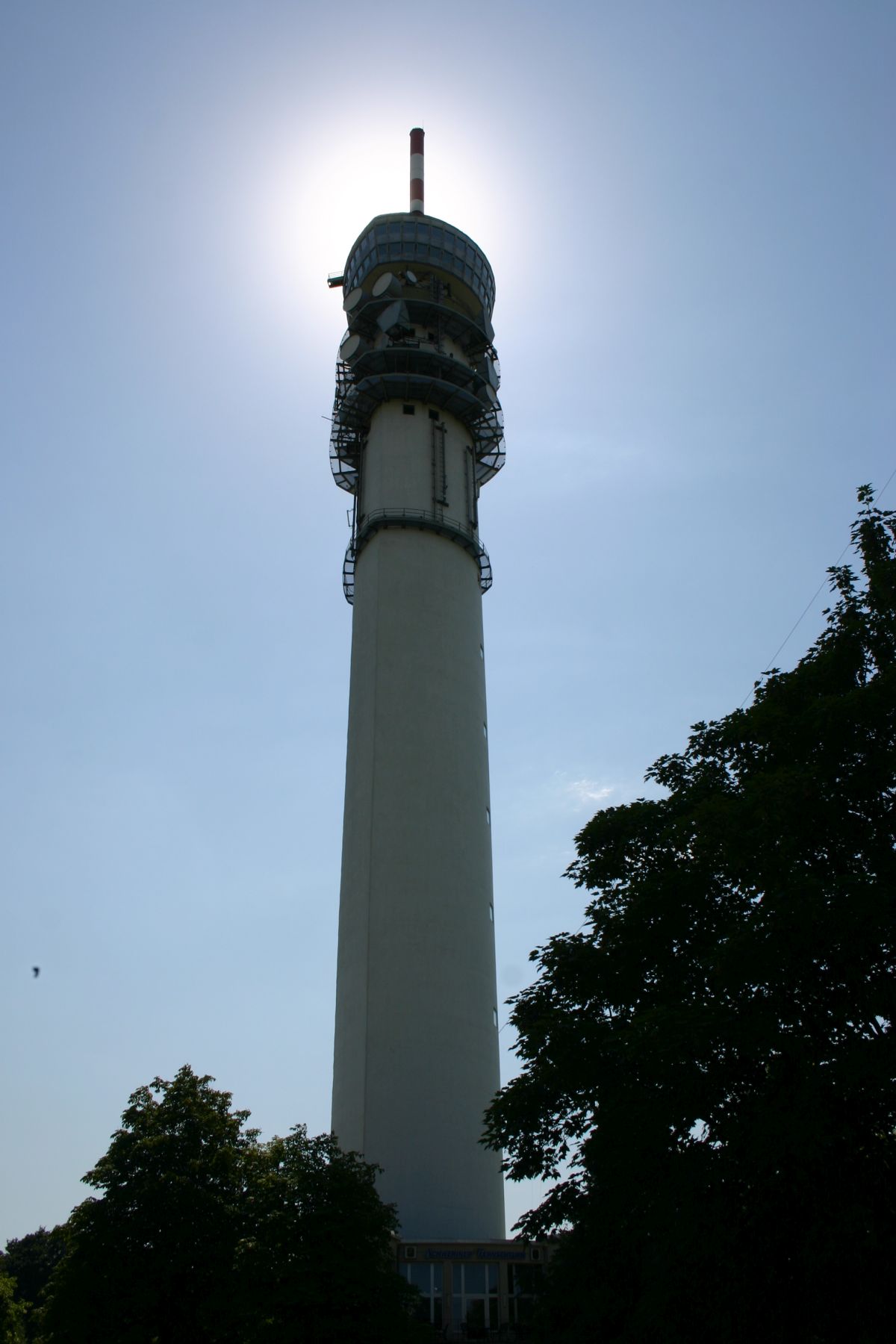
Schwerin’s television tower is even higher than the cathedral’s spire. From the tower there is a unique view of the whole of Schwerin and the landscape with forests and the lake, Schweriner See. There are two floors at the top of the television tower, one with a 360 degree panoramic view and one with a restaurant.
These gardens form a large park south of Schwerin Castle. The central part is laid out in Baroque style with canals and statues, and it is one of the leading Baroque gardens in Northern Germany.
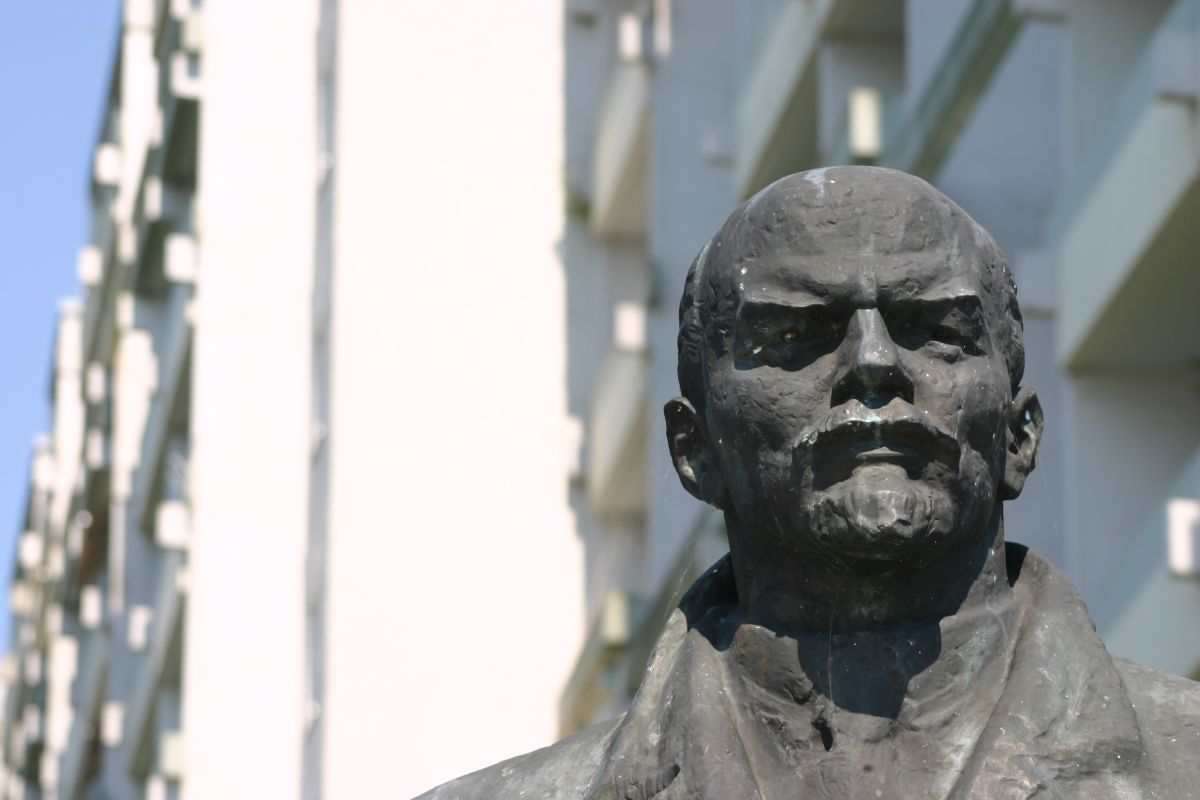
Großer Dreesch is a typical GDR suburb, built in the so-called Plattenbau, which was constructions with use of large, prefabricated concrete slabs. The ground breaking of Großer Dreesch was in 1971, and an impressive number of apartments, shops and so on were built over the next 15 years.
This is an interesting and idyllic mill at the lake Fauler See. It is a reconstruction of the original mill from the 18th century. The water-powered machines use a large water wheel to work, and you can experience how stones were cut and processed hundreds of years ago.
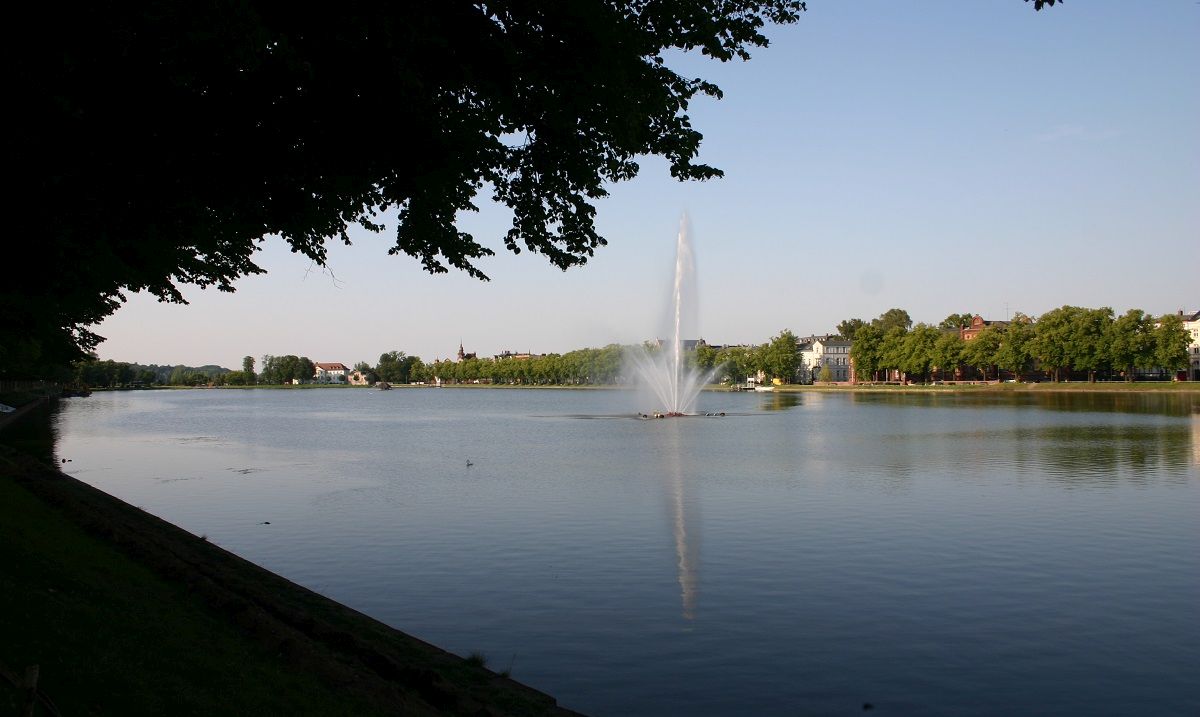
Pfaffenteich is an artificially landscaped lake that leads all the way to the heart of the city. You can access the lake from the famous pedestrian street, Mecklenburgstraße, that opens up on right at the banks of Pfaffenteich.
Schelfstadt is one of Schwerin’s nicest neighborhoods. Everywhere in the streets you feel taken back in time with a mix of larger buildings and townhouses in half-timbered style. The street Münzstraße has been renovated and partially reconstructed, and it is a good place to see the real Schelfstadt.
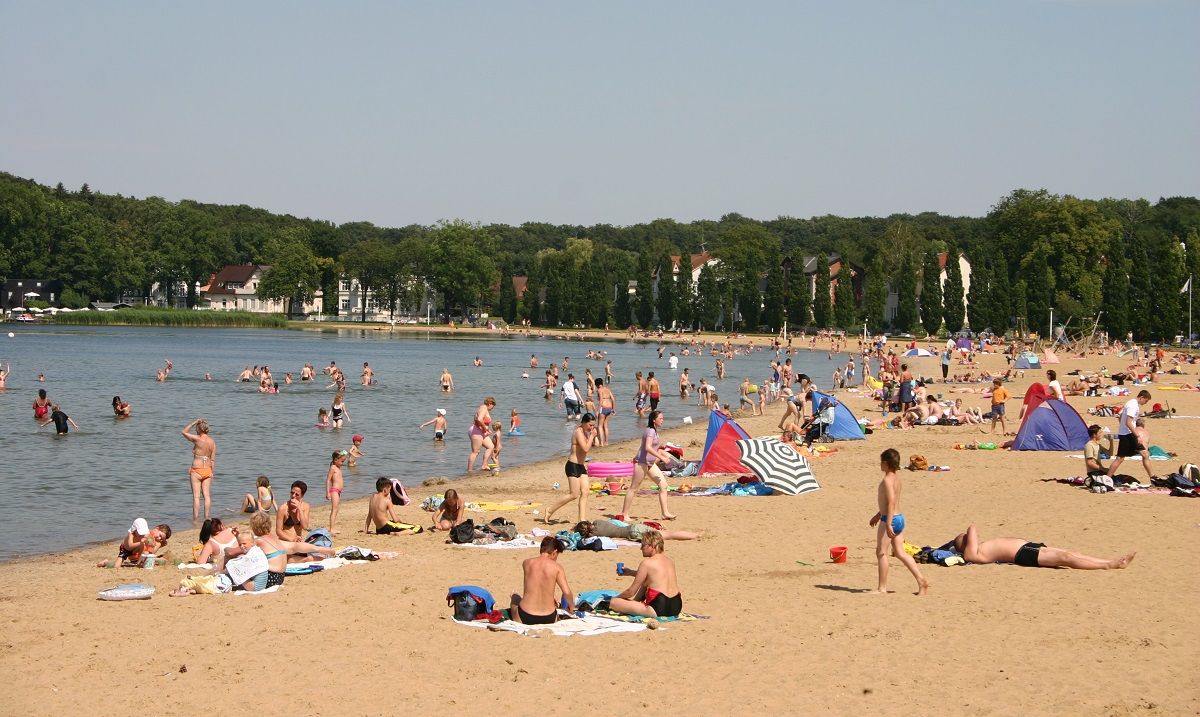
The quaint town of Zippendorf is located on the southern shore of the Schweriner See, and it is known for its lovely atmosphere with a sandy beach and stately 1900s mansions.
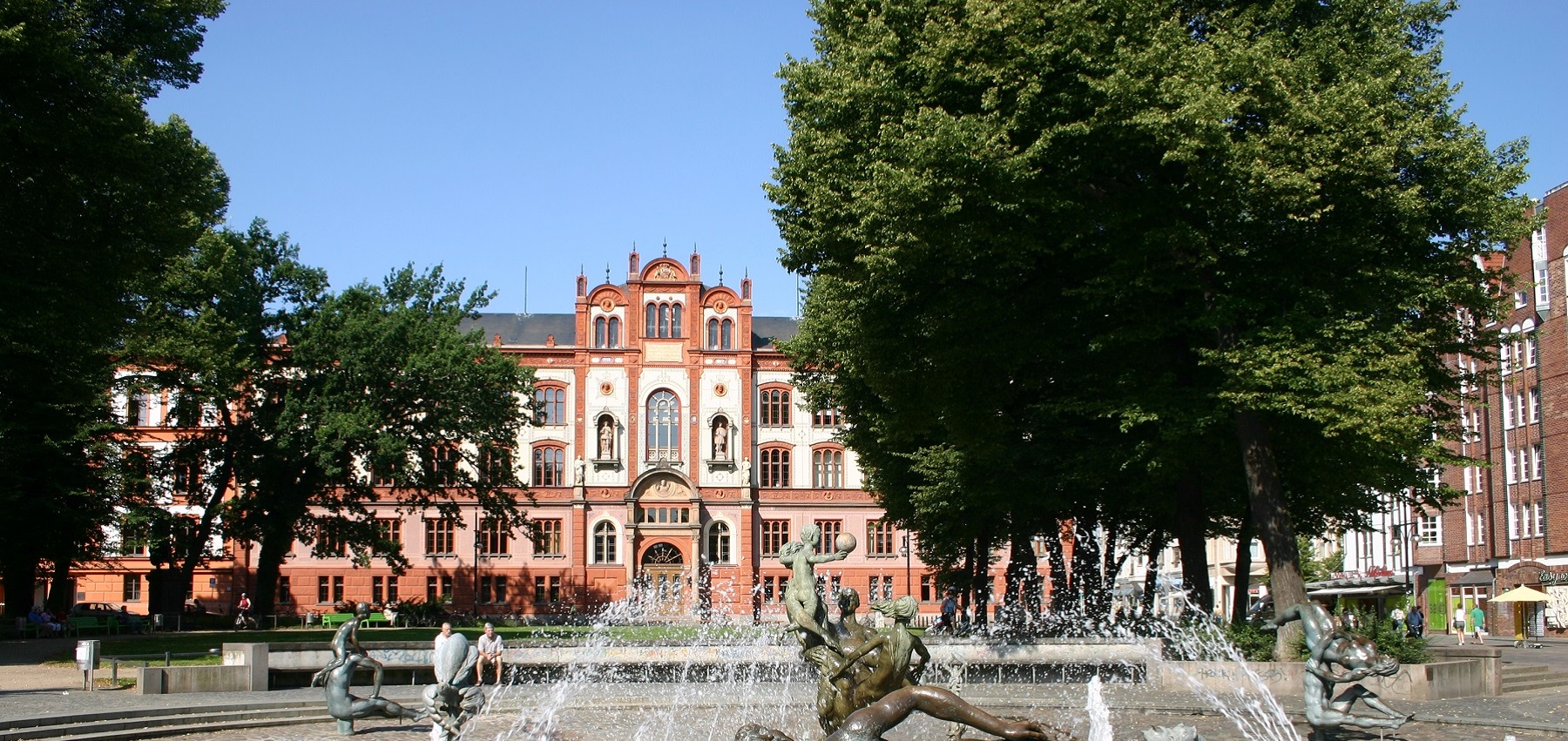
Rostock is one of the northern German cities, which grew with the Hanseatic League’s trade and financial success, and its historical wealth has been the source to a lot of constructions, that can be seen today. There are large churches, the region’s oldest university and much more.
Güstrow is a city in Mecklenburg-Western Pomerania with a center that has been built over the centuries. The city is today best known for its Renaissance castle, but there are many other sights in Güstrow as well. Distances are short in the old town, where you will find the market square with the city’s elegant town hall.
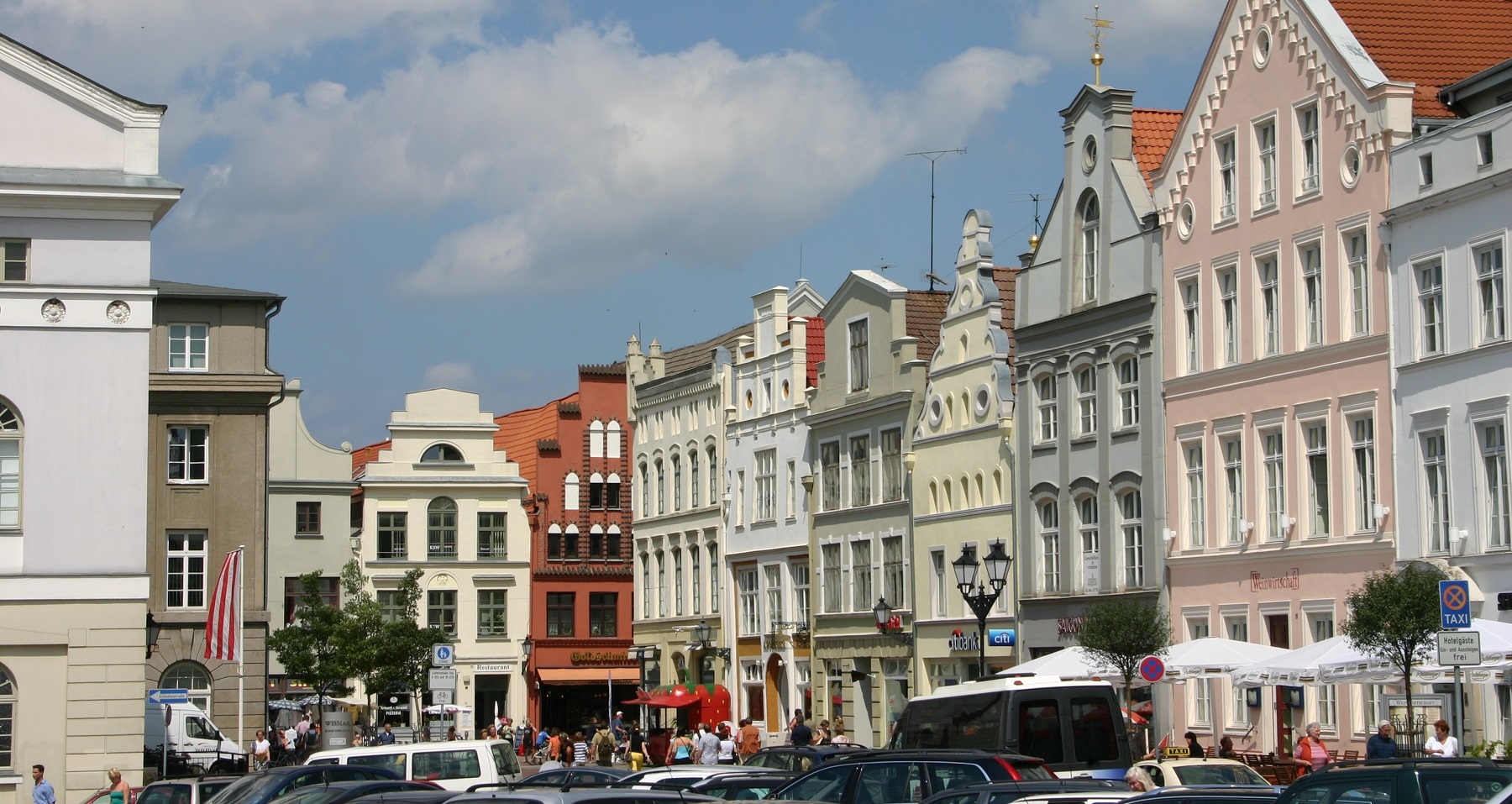
Wismar is one of the historic North German Hanseatic cities, where you can see many old buildings in the so-called Brick Gothic. This architectural style is typical for the once prosperous cities of the Hanseatic League. In Wismar you should see the market square, the great churches of the city and the old harbor.
Lübeck was the queen of the Baltic Sea region’s Hanseatic cities, and it still is, and that is not without reason. Majestic churches and countless old houses, monasteries and other medieval buildings are evidence of the immense wealth that made the city flourish over the centuries.
Marienplatz
schlosspark-center-schwerin.de
Grabenstraße 1
siebenseencenter.de
Mecklenburgstraße, Friedrichstraße, Puschkinstraße, Schloßstraße, Marienplatz
City tour: Stadtrundfahrt, Market, www.petermaennchen-stadtrundfahrten.de
Fire Service: Internationales Feuerwehrmuseum, Hamburger Allee 68, www.ifm-schwerin.de
Schweriner Fernsehturm
Hamburger Allee 72-74
schweriner-fernsehturm.de
Seerundfahrt
Werderstraße
weisseflotteschwerin.net
Zoo Schwerin
An der Crivitzer Chaussee 1
zoo-schwerin.de
From the 9th century there was a West Slavic settlement of abodrits in the lake area of present-day Schwerin. At that time, the place was known as Zuarin, a precursor to today’s city name. Crusade against the Slavic people in the region started in 1147 with a Danish army and led by Henry the Lion.
In 1160, Henry the Lion overcame the Abodic leader Niklot and Zuarin, and he became the founder of the modern city. Monks moved monasteries to the city, which in 1167 became the capital of the new county of Schwerin.
City rights were introduced in 1228, where a town council with six councilors and a mayor was established. At the same time, the counties and the bishop of the city were powerful entities, each of which influenced the development of the city, including the initiation of a new cathedral.
The first city defense was built of wood, but in 1340 a powerful stone wall was completed. The city had three city gates to land, and the natural foreclosure to Lake Schweriner See also formed an essential part of the defense; here was the castle on the island where the castle is today.
Mecklenburg’s Duke Albrecht II was a descendant of Niklot, and he besieged Schwerin in 1358 through months with his army. The same year, Schwerin’s Count family extinct Gunzelin, and Albrecht II bought the town for 20,000 silver land.
Schwerin thereby became part of the Duchy of Mecklenburg. Albrecht II made the city his residence, making it the political and cultural center of Mecklenburg. Economically, the northern Hanseatic cities, such as Rostock and Wismar, developed more than Schwerin, but maintained its position as the center of the region.
From around 1500, the residence castle was rebuilt and expanded into a larger and representative castle. The 16th century and the following centuries were also periods of great expansion of the city. Large public buildings and private mansions shot up; in the new Schelfstadt district, which was laid out as part of Schwerin itself in 1705.
In 1621, Mecklenburg was divided, but Schwerin’s status was maintained. From that time it became the capital of the new duchy of Mecklenburg-Schwerin.
1731-1735 Prince Christian Ludwig had a hunting castle erected in Ludwigslust outside Schwerin. It was used extensively, and in 1756 a relocation of the court to this began. Officially, Ludwigslust was the Duke’s residence in the period 1765-1837, before Schwerin again became the court’s hometown; a status that lasted until the disintegration of the monarchy in 1918.
Throughout the 19th century Schwerin was rebuilt from its medieval structure with city walls and older wooden houses. Larger buildings and wide streets were built, and splendid mansions shot up not least the state administration.
It was also the time when railway stations, theater and museums were built in great style. In 1904, the city’s electricity plant was opened, and the new power enabled the electric trams to enter four years later.
Political upheaval marked the time after World War I. Germany transitioned from monarchy to republic, and the Grand Duke abdicated in 1918. After that, Schwerin became the capital of the new state formation; the Free State of Mecklenburg-Western Pomerania.
In the 1930s there were big plans to change Schwerin to be a model example of a logistically and transport technically efficient capital in the administrative units called Gau; Schwerin had become the center of Gau Mecklenburg in 1934. Magnificent buildings and parades were to be erected, but they were not completed.
At the end of World War II, Schwerin was captured by American troops on May 2, 1945. On July 1, Soviet soldiers joined the city, becoming part of the GDR. After a new administrative division in DDR 1952, Schwerin became the administrative city in the area of the same name.
During the GDR, Schwerin’s suburbs were greatly expanded with residential blocks; among others in the suburb of Großer Dreesch, which shot up from 1971. The city center should also have been renovated and modernized, but as in the 1930s, the big plans did not materialize. However, large public buildings were added, such as the city’s TV tower and the sports and congress hall from 1964.
After the German reunification in 1990, the former state of Mecklenburg-Western Pomerania was re-established as a federal state, and Schwerin became a new government seat; this time for the country day and the state’s prime minister.
Today, Schwerin stands as new after a series of restorations of the many beautiful buildings. Also, the green areas with the castle garden at the forefront stand as in ancient glory, and among major events, the national German garden exhibition, Bundesgartenschau, took place in the city in the summer of 2009.
Overview of Schwerin
Schwerin is the capital of the state of Mecklenburg-Western Pomerania and the historic residence city of the dukes and grand dukes of Mecklenburg-Schwerin. It is the home to loads of elegant and magnificent buildings in the beautifully situated town on the lake Schweriner See, where you can enjoy various lovely lake cruises.
The most famous building is Schwerin Palace, which is a true fairy tale castle with its many towers and spiers. It is a must to visit during a tour of the city, but there are also many other large buildings within a pleasant walking distance. Along the way you can enjoy the fine pedestrian streets and squares located in the old town.
About the upcoming Schwerin travel guide
About the travel guide
The Schwerin travel guide gives you an overview of the sights and activities of the German city. Read about top sights and other sights, and get a tour guide with tour suggestions and detailed descriptions of all the city’s most important churches, monuments, mansions, museums, etc.
Schwerin is waiting for you, and at vamados.com you can also find cheap flights and great deals on hotels for your trip. You just select your travel dates and then you get flight and accommodation suggestions in and around the city.
Read more about Schwerin and Germany
Buy the travel guide
Click the “Add to Cart” button to purchase the travel guide. After that you will come to the payment, where you enter the purchase and payment information. Upon payment of the travel guide, you will immediately receive a receipt with a link to download your purchase. You can download the travel guide immediately or use the download link in the email later.
Use the travel guide
When you buy the travel guide to Schwerin you get the book online so you can have it on your phone, tablet or computer – and of course you can choose to print it. Use the maps and tour suggestions and you will have a good and content-rich journey.
Schloßstraße • Boat Trips • Market Square • Beautiful Castle • Zippendorf
Overview of Schwerin
Schwerin is the capital of the state of Mecklenburg-Western Pomerania and the historic residence city of the dukes and grand dukes of Mecklenburg-Schwerin. It is the home to loads of elegant and magnificent buildings in the beautifully situated town on the lake Schweriner See, where you can enjoy various lovely lake cruises.
The most famous building is Schwerin Palace, which is a true fairy tale castle with its many towers and spiers. It is a must to visit during a tour of the city, but there are also many other large buildings within a pleasant walking distance. Along the way you can enjoy the fine pedestrian streets and squares located in the old town.
About the upcoming Schwerin travel guide
About the travel guide
The Schwerin travel guide gives you an overview of the sights and activities of the German city. Read about top sights and other sights, and get a tour guide with tour suggestions and detailed descriptions of all the city’s most important churches, monuments, mansions, museums, etc.
Schwerin is waiting for you, and at vamados.com you can also find cheap flights and great deals on hotels for your trip. You just select your travel dates and then you get flight and accommodation suggestions in and around the city.
Read more about Schwerin and Germany
Buy the travel guide
Click the “Add to Cart” button to purchase the travel guide. After that you will come to the payment, where you enter the purchase and payment information. Upon payment of the travel guide, you will immediately receive a receipt with a link to download your purchase. You can download the travel guide immediately or use the download link in the email later.
Use the travel guide
When you buy the travel guide to Schwerin you get the book online so you can have it on your phone, tablet or computer – and of course you can choose to print it. Use the maps and tour suggestions and you will have a good and content-rich journey.

The Mecklenburgstraße pedestrian street is Schwerin’s main shopping area. The street connects central parts of Schwerin and offers many shops and restaurants between the sights.
At the embankment between the stables of Schwerin Castle and the castle itself you can board a lake cruise on the Schweriner See with magnificent views to the city.

Schwerin’s television tower is even higher than the cathedral’s spire. From the tower there is a unique view of the whole of Schwerin and the landscape with forests and the lake, Schweriner See. There are two floors at the top of the television tower, one with a 360 degree panoramic view and one with a restaurant.
These gardens form a large park south of Schwerin Castle. The central part is laid out in Baroque style with canals and statues, and it is one of the leading Baroque gardens in Northern Germany.

Großer Dreesch is a typical GDR suburb, built in the so-called Plattenbau, which was constructions with use of large, prefabricated concrete slabs. The ground breaking of Großer Dreesch was in 1971, and an impressive number of apartments, shops and so on were built over the next 15 years.
This is an interesting and idyllic mill at the lake Fauler See. It is a reconstruction of the original mill from the 18th century. The water-powered machines use a large water wheel to work, and you can experience how stones were cut and processed hundreds of years ago.

Pfaffenteich is an artificially landscaped lake that leads all the way to the heart of the city. You can access the lake from the famous pedestrian street, Mecklenburgstraße, that opens up on right at the banks of Pfaffenteich.
Schelfstadt is one of Schwerin’s nicest neighborhoods. Everywhere in the streets you feel taken back in time with a mix of larger buildings and townhouses in half-timbered style. The street Münzstraße has been renovated and partially reconstructed, and it is a good place to see the real Schelfstadt.
Similar to Schwerin Travel Guide
There are no listings matching your search.
Reset